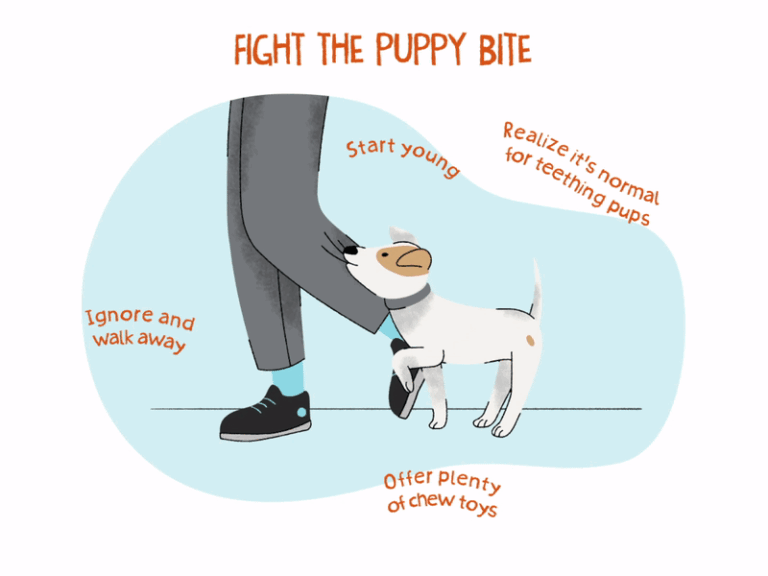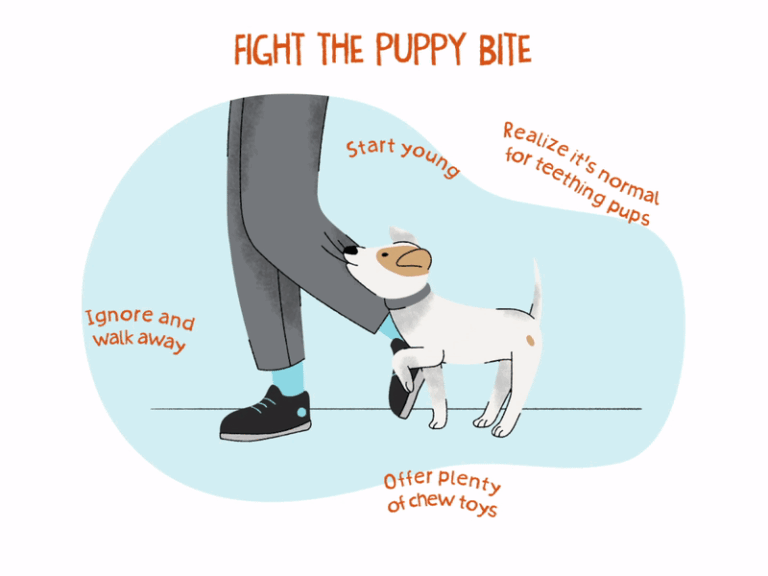
A common question is “Why does my dog bite when playing?” Probably a combination of frustration, fear, and injury, but it is also possible that Dogs sometimes bite out of play. Here are some ways to prevent your dog from biting while playing. In addition to the toys that you buy for your dog, you can also try using items you already have around your home to entertain your pet. Just remember to reinforce the concept of “not ok” to bite in a way that will discourage over-excited behavior.
Dogs learn to bite too hard when playing
A dog may learn to bite too hard when playing for a variety of reasons. This is called biting inhibition. A dog without biting inhibition does not recognize the sensitivity of human skin and may bite too hard while playing. Behaviorists believe that a soft mouthed dog is less likely to break human skin, or bite too hard when playing. However, if you want to prevent this behavior in your puppy, you can use the tips outlined below.
– Remove yourself from the situation. If your dog is using their mouths to play with you, stop playing for about 10 to 20 seconds and then return. During this time, teach your dog that biting softly will earn him more playtime, and he will learn to control his mouth. If you do not take away playtime for a few minutes, you should give him enough time to play with his mouth without biting.
Dogs bite out of frustration
When a dog gets frustrated, they might bite their housemate. Dogs with anxiety issues may bite out of frustration when they get into situations that make them feel threatened, scared, or anxious. These dogs may also have a history of punishment, and their biting is often a cover for their fear of being punished. So, what can you do about a dog that bites out of frustration when playing? Let’s find out.
The first step in preventing your dog from biting out of frustration is to understand why he might be doing it. If your dog gets excited while playing, it will likely display aggression. This can lead to an attack. But this aggression isn’t always directed at you, or even your pet. A dog may bite out of frustration when you hold his leash or he’s not playing in the way he wants.
Dogs bite out of fear
There are two types of dogs: those that bite out of fear and those that bite out of dominance. Fearful dogs bite because they are afraid of the stranger and often begin the encounter with a snap and retreat bite to avoid the threat. However, this type of behavior can escalate to biting out of aggression because it reinforces the fact that aggressive behavior works. This behavior can be challenging to correct and can be hard to recognize at first. Initially, the dog may snarl or growl, but as the situation escalates, the dog will begin to actually bite.
The most common cause of dogs biting out of fear is flooding. Flooding is when a dog is subjected to a large, scary event. Although flooding doesn’t change the emotional response of the dog, it will make it more likely to bite out of fear. If the dog is a victim of flooding, it may be a good time to consider calming methods for dogs. Physical punishment, however, can make the dog more afraid of you and cause real aggression.
Dogs bite out of injury or illness
While dogs often bite out of excitement or amusement, they can also cause serious injuries. A dog’s bite can lead to bacterial infections, so it’s important to clean the wounds properly. Visiting a veterinarian can help prevent infection and identify whether your dog was infected. Some of the symptoms of a dog bite are pain, swelling, redness, pus, and even a warm sensation at the site of the bite.
As with any dog bite, it’s important to get medical help immediately. Depending on the severity of the wound, you may be able to treat it yourself or seek medical attention. First aid involves cleaning the wound thoroughly and applying an antibiotic ointment. If you’re concerned about bacterial infection, you should call a veterinarian. Your veterinarian will know your pet’s medical history and will be able to make the best recommendations for treatment.
Time-out procedure to curb mouthy behavior
There are many methods to control your dog’s mouthy behavior, including the time-out procedure. This procedure prevents your dog from engaging in any type of inappropriate behavior by removing the focus of his attention. When your dog begins mouthing you, use the time-out procedure to distract him by using a chewing toy. Alternatively, you can give him a treat and reward him for his behavior. Teaching your dog impulse control commands can also help you to prevent mouthing in the future.
While most dogs chew on objects, others will get into a mouthing frenzy and attempt to dominate your interactions. When this happens, you should remove your puppy from the situation, wait for at least 30 seconds, and then redirect him to a safe toy. Time-outs are important, but they are not always effective. For example, a time-out might escalate the dog’s reaction if you mark its teeth against your skin.
Prevention of dog bites
A big factor in preventing dog bites is proper socialization and training. Research shows that most dog bites occur due to fear, protectiveness, or feeling uncomfortable. Prevention of dog bites involves proper socialization, providing structure, and building your dog’s confidence. In addition to socializing your dog, you can also teach your children how to behave around dogs. The Centers for Disease Control estimates that dogs bite 4.5 million people each year.
First, know your pet’s body language. While dogs don’t always show their true emotions, they often show body language to indicate their discomfort or fear. They may display bared teeth, lowered head, or licking their lips. If you notice these warning signs, step away until your dog demonstrates calm body language. Do not play tug-of-war or wrestle with your dog, as this will only aggravate the situation.






